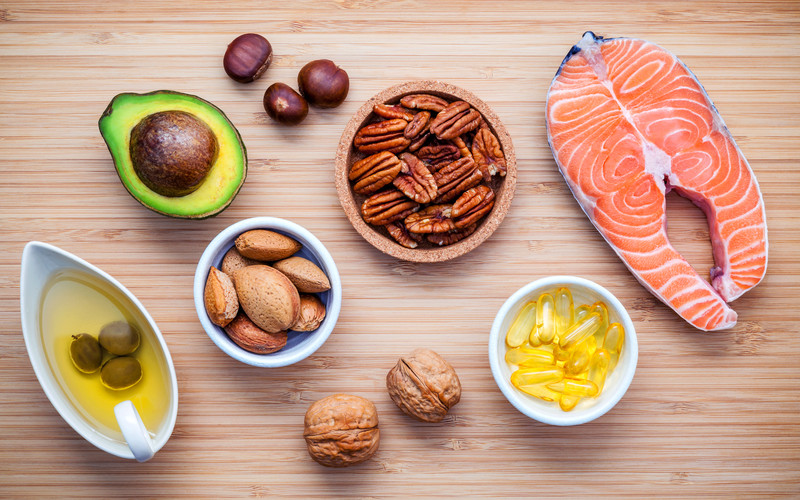My online studying continues and today, I am reviewing what I have learnt about Fats. This is what I have got so far.
1. Fats are essential to our diet
We need fats to help absorb fat soluble vitamins (such as A, D, K and E).
2. MUFA and PUFA are my new favourite acronyms.
Monounsaturated Fats (MUFAs) can be got from such foods as olive oil, avocados and nuts/seeds.
Polyunsaturated Fats (PUFAs) can be got from such foods as corn oil, fatty fish, walnuts and tofu.
3. Omega 3 (not 6) is the one that is good for you.
At last, I know what Omega 3 fat is (it’s a PUFA) and I think its good for me (building block and blood thinning). It seems most of us would benefit from less Omega 6 and more Omega 3.
There is some amusing discussion online about the balance of Omega 3 (good) and Omega 6 (less good) which nowadays is about 1:10 whereas in our Stone Age diet apparently, it used to be 1:2.
I discovered the Angry Chef (beware, high levels of swearing may be offensive) who is against the pro-Omega 3 gurus selling their books and related products, saying how lucky they are to have found ‘those well-known Palaeolithic food diaries’ where ‘cave people have helpfully left written details of their daily food consumption, so allowing detailed nutritional analysis’. Great!
4. Saturated fats are bad for you – or are they?
Whilst several government dietary guidelines (as well as my course tutor!) encourage limiting saturated fats in-take (no more than 30% of daily energy intake), as it increases your likelihood of having a heart attack, there is research and a very visible community, promoting fat intake. They claim there is no hard evidence showing it leads to increased risk of heart attack.
We have been told since the 1970s that saturated fat is bad for us, because it increases levels of cholesterol and this can lead to heart attacks / heart disease. I even still remember those TV campaigns aimed at replacing nasty butter with ‘healthy’ margarine.
However some people (e.g. Nina Teicholz in the Big Fat Surprise) promote research suggesting that it is not just about levels of cholesterol. There is good and bad cholesterol. Low fat diets can bring both of these down. Now for the interesting bit.
It is low levels of the ‘good’ HDL cholesterol that can lead to high risk of heart disease, rather than high levels of ‘bad’ LDL cholesterol.
So, bringing both HDL and LDL down is doing more harm than good and actually causing a higher risk of heart disease.
Of all the debates on nutrition, this is one of the most confusing for me to date.
Leading researchers seem to disagree.
Any comments appreciated!
5. Trans fats are the real villains and governments around the world (Denmark, Austria, Iceland, Switzerland to name a few) have virtually banned them.
These are the ones that occur when vegetable oils have hydrogen added to them to make them more solid – such as in our margarine, and they are also common in cakes, biscuits, microwave popcorn and all those sweet things you may love!
The way to spot it on the labels is to look for ‘partially hydrogenated oils’.
Final thought, for those of us cooking, different oils have different flash (or smoking) points, above which they start to create free radicals – i.e. do more harm than good. Flaxseed oil and virgin olive oil are quite heat sensitive, so not good for high heat such as stir frying.
That explains why my wife uses sunflower oil for all her stir fries – I wonder if she knew that!
Useful References
Nina Teicholz The Big Fat Surprise Ch 6. – https://thebigfatsurprise.com
Framingham Heart Study – https://www.framinghamheartstudy.org/about-fhs/research-milestones.php
https://www.ncbi.nlm.nih.gov/pubmed/3196218
https://healthyforgood.heart.org/eat-smart/articles/trans-fat

